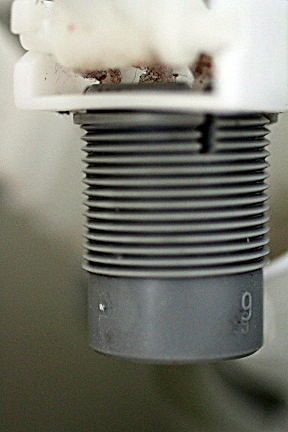Lonsdale73
Established Member
Any plumbers in the pplace able to offer some advice please.
Yesterday, the toilet cistern was taking forever to fill up and once it did it kept on filling so I removed the cistern lid and found there was water sprayig out in all directions but not very much of it. I tried adjusting the nylon nut which shot off into the cistern. I put it back together and found there was now a jet of water coming out of a nozzle and the cistern filled up pretty quickly. But now the jet won't shut off so there's a constant trickle of water from cistern into bowl.
To compound matters, there's a grey theaded part that looks like it's meant to sit inside a collar so that when the flush buttons are pressed, arms linked to the colla are raised and the toilet flushes. Except it won't stay inside the collar long enough for me to reassemble everything to test it. Anyone with any ideas or suggestions?




Yesterday, the toilet cistern was taking forever to fill up and once it did it kept on filling so I removed the cistern lid and found there was water sprayig out in all directions but not very much of it. I tried adjusting the nylon nut which shot off into the cistern. I put it back together and found there was now a jet of water coming out of a nozzle and the cistern filled up pretty quickly. But now the jet won't shut off so there's a constant trickle of water from cistern into bowl.
To compound matters, there's a grey theaded part that looks like it's meant to sit inside a collar so that when the flush buttons are pressed, arms linked to the colla are raised and the toilet flushes. Except it won't stay inside the collar long enough for me to reassemble everything to test it. Anyone with any ideas or suggestions?













































